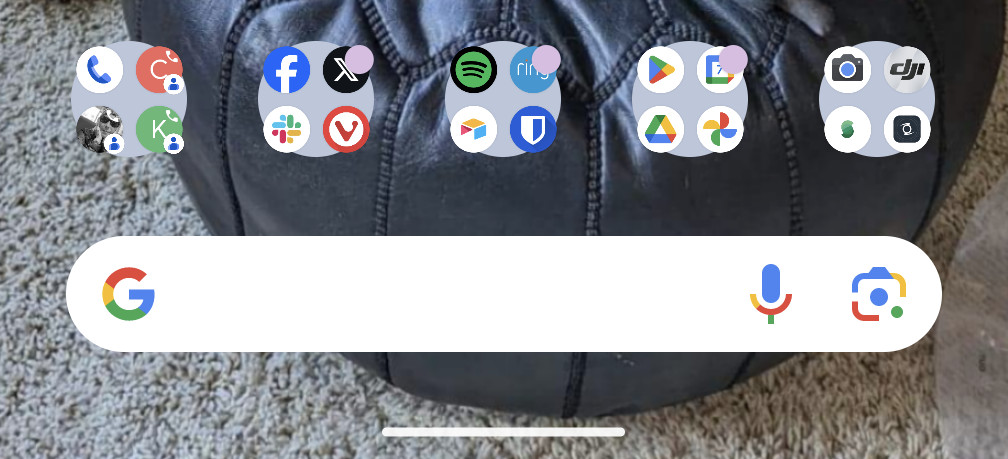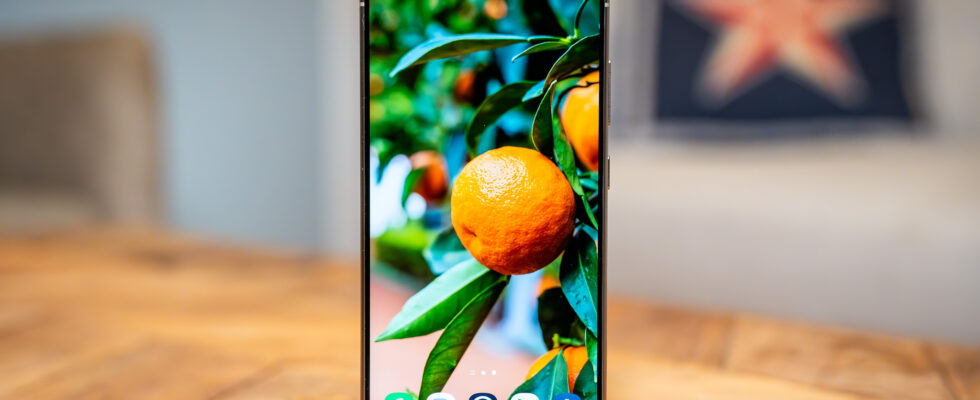Image: Jason Hiner/ZDNET.
Android has many advantages over its competitor iOS, including a fully customizable home screen.
Its main flaw, in reality, is that each manufacturer offers its own version of Android. So you can do certain things with the mobile OS on a Google Pixel, but not on a Samsung Galaxy… and vice versa.
However, below you will find 5 tips to optimize the home screen of your Android smartphone. And you should be able to apply them, regardless of the brand of your device. Although the menus may differ slightly.
1. Clear your mind
What if your home screen is blank? The app drawer is easily accessible on Android, and it allows you to easily access your apps, organized alphabetically, and accessible by search. So you can afford to display a blank – or minimalist – home screen. To prevent the icons of new applications that you install from disturbing this free space, go to Settings > Home screen and deactivate Add app icons to the home screen.

2. Use folders
To be able to clear your home screen as much as possible, you can also use folders. Group the apps you use most into a few folders, by categories, and name your folders accordingly. For example, you can create a “Google” folder with Gmail, Drive, Photos, Meet, Docs and Maps.
To create a folder, drag one app onto another. You can then move the folder wherever you want on your home screen, so it is easily accessible, and rename it.

My home screen’s five folders are located at the bottom of the screen, allowing me to quickly access apps after unlocking the screen. Screenshot by Jack Wallen/ZDNET.
3. Limit your use of widgets
Adding widgets to the home screen is tempting, but they can quickly fill the screen and hinder its readability. Stick to a minimum of widgets, choosing only those that will really be useful to you on a daily basis.
If you have more widgets on your screen, not only will it be more difficult to find your applications, but you may also have difficulty finding an empty space to press and hold and thus quickly access the settings on the home screen.

If you can’t access this pop-up, you may have too many widgets on your home screen.
4. Show the Google search bar
On some models, it is possible to remove the Google search bar. I recommend leaving it on, as it can be useful for research throughout your day. If you delete it, you will need to open your browser, then display Google before launching a search.
With this tool, you simply need to click on the text box and type your search. If you can place it at the very bottom of your home screen, you will be able to access it even more easily and with one hand.
5. Make it easier for you to access the Google app
The Google application is very practical, because it allows you to access your Google account while consulting the latest news, the weather or even sports results.
Enabled by default on some devices, it is not available on others. On Pixels, just go to the home screen settings and turn on the switch Swipe to access the Google app. Then simply swipe to the right, on the home screen, to display the information that interests you.

Screenshot by Jack Wallen/ZDNET.
And there you have it, your home screen is breathing… and so are you! It’s now up to you to find the best organization to easily and quickly access your favorite applications.
Source: ZDNet.com
